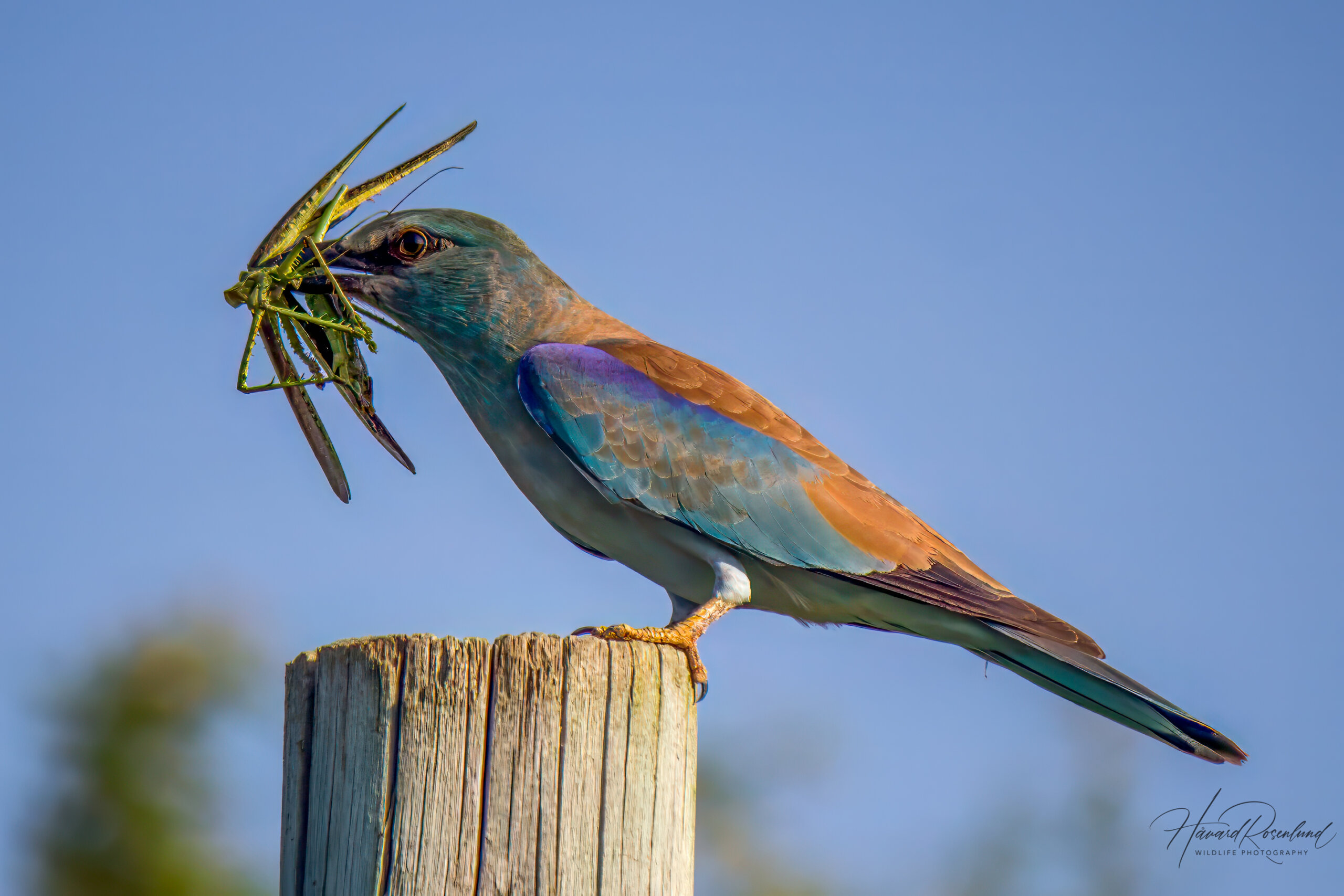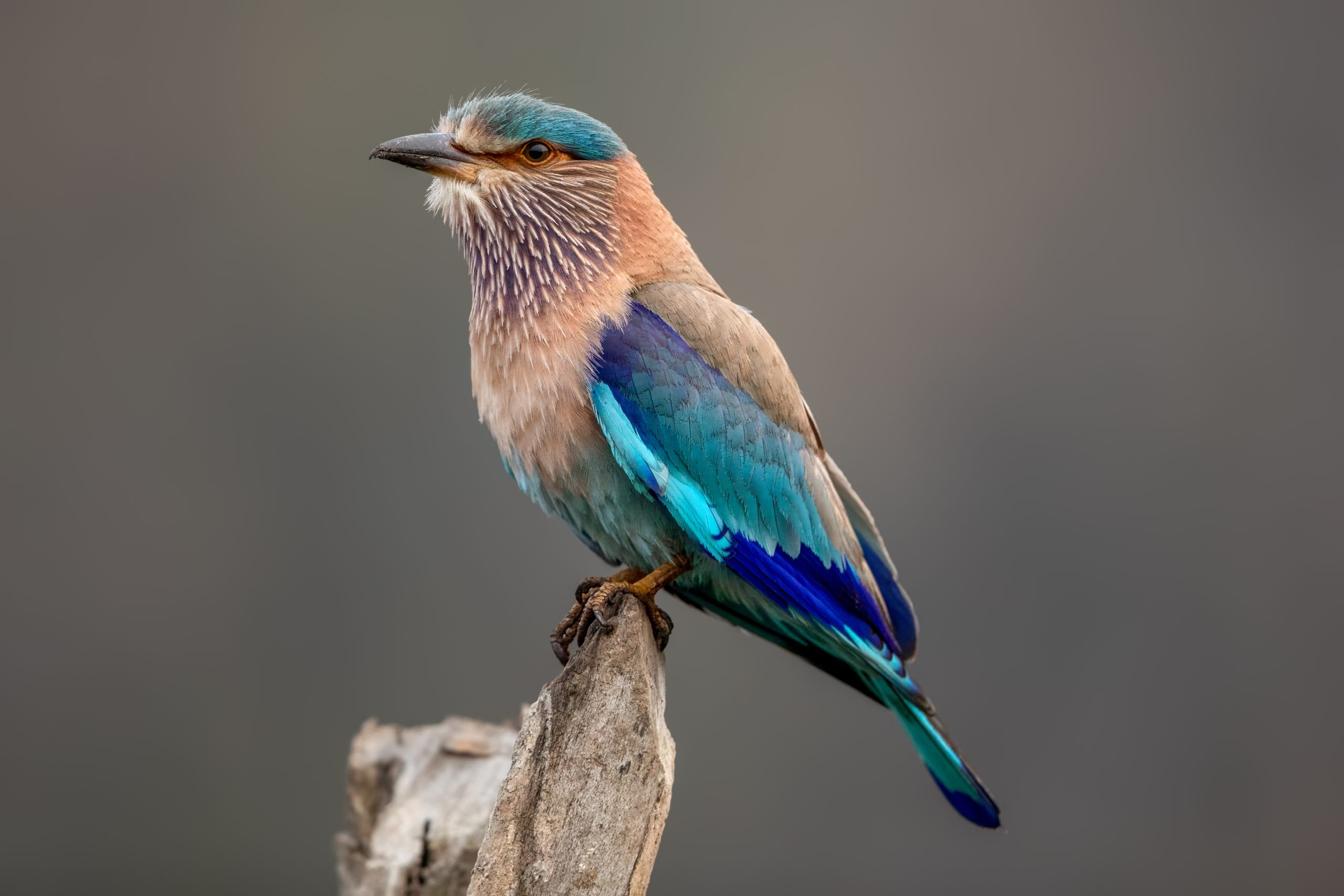Description
The European roller (Coracias garrulus) is the only species in the roller family that breeds in Europe. In shape and size rollers can resemble crows although they are a lot more colorful. Lengths reach 29-32 cm (11.4-12.6 in). The bird is mostly light blue overall, except for an orange-brown back. It is very similar in appearance to the Abyssinian roller (Coracias abyssinicus), which has a much longer tail. There are two subspecies, Coracias garrulus garrulus, which breeds in northwest Africa, parts of southern Europe, through Asia Minor, and into southwest Siberia. The second is the somewhat paler Coracias garrulus semenowi, which breeds in Iraq, Iran, east to Kashmir, and north through parts of Turkmenistan, Kazakhstan, and northwest China.
Diet & habitat
The European roller prefers warm and dry climate. Within its breeding range it is commonly found in open countryside with forest patches and often close to farmlands, orchards and vineyards, as well as pine forests with clearings. In the African wintering grounds, it prefers open, dry savannah habitat with adequate tree coverage. It is often seen perched on an open branch, a fence or on power lines searching for prey. It feeds mainly on large insects and other invertebrates, as well as amphibians, smaller lizards, snakes, and birds.
Migration
The European roller migration covers vast distances between continents. From the breeding grounds of Europe and Asia it travels over 10,000 km to its winter grounds in sub-Saharan Africa where it is found as far south as South Africa. Hundreds of thousands of individuals starting on their journey back north can be seen travelling from Tanzania to Somalia together along the coast in early April and is a well-known migration spectacle.
Nesting
It is a monogamous breeder and both partners will defend their territory from rivals. They make nests inside holes in trees, houses, cliffs, as well as in vertical riverbanks. Four to five eggs are laid in the period May-June and is incubated primarily by the female for 17-19 days. Chicks leave the nest after 25-30 days and are continued to be fed by the parents for about three weeks more.
Status
The European roller is believed to have undergone a decline by 25% in the period 1990-2000. It is no longer breeding in many of the northern parts of its European range, such as in Sweden, Denmark, Finland, eastern Germany, and northern Russia. Reasons for this decline and disappearance is thought to be due to lack of nesting sites because of deforestation, pesticides in farmlands, and the fact that they are common targets and often shot in and around the Mediterranean. In Oman alone, hundreds, or even thousands, of individuals are shot each year for food. The population seems to be more stable in Asia. However, it does seems that the species is in recovery and is now listed as least concern on the IUCN Red List, where it was previously listed as near threatened.







